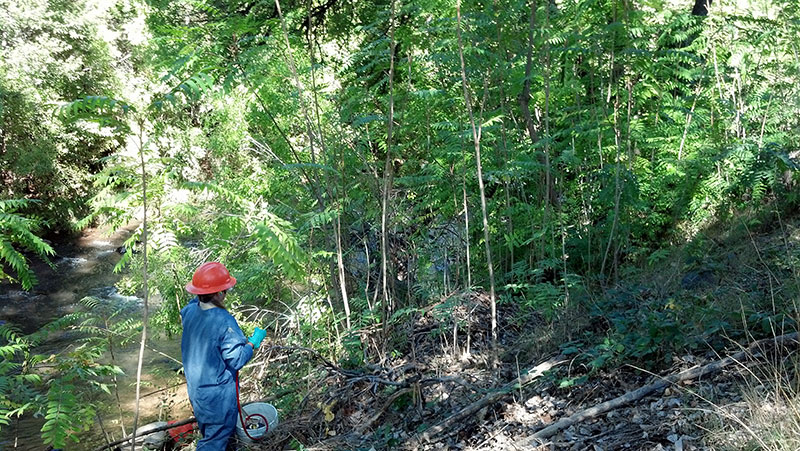Learn
by Hudson Keffer
October 15, 2020
As a recent transplant to the Verde Valley, I quickly came to realize that Arizona is not entirely the dry and desolate place that it is assumed to be. Sure, the majority of this valley is filled with drought tolerant plants like Creosote bush, Mesquite, and Prickly Pear cactus – but stepping foot into the riparian zone of the Verde is like walking into a whole new world.
The riparian zone of the Verde River harbors a dense and diverse community of plants and wildlife. Within my first week of monitoring, I found myself mesmerized by rare or endemic (locally exclusive) plants hiding inconspicuously within the “sea of green”, a Western Screech Owl roosting in the willow tree ahead of us, and hearing the meow of a baby cougar much too close for comfort. This “sea of green” adds an element of adventure and struggle to our monitoring efforts.
What initially seems like a leisurely day on the river quickly turns into an Indiana Jones-style adventure of bushwhacking and army crawling through 8-foot-tall grasses, cat-clawed shrubs, and a narrow canyon ledge. I can’t help but to recognize how much I love this job. Beyond the adventurous nature of our monitoring efforts, I am so happy to contribute to Friends’ efforts of restoring the Verde River to a more native environment.
Our monitoring and treatment efforts are focused on a primary list of four non-native invasive species: Tree of Heaven (Ailanthus altissima), Giant Reed (Arundo donax), Salt Cedar/Tamarisk (Tamarix ramosissima), and Russian Olive (Elaeagnus angustifolia). These plants have been identified as threats to the native ecosystem of the Verde River due to their limited ecological function, rapid growth and effective dispersal.
Brought here from a different ecosystem, these plants have little competition within the Verde River Watershed, nor do they benefit the habitat. In their native ecosystems, plants like Tree of Heaven and Giant Reed are restricted in their growth by competing plants, less hospitable growing environments, and populations are maintained by herbivory by native insects. In addition to their limited ecological benefit, plants like Tree of Heaven (Ailanthus altissima) and Tamarisk (Tamarix ramosissima) actively inhibit the growth of native species through changes in the soil chemistry.
By reducing native trees and habitat, invasive plants can pose a serious threat to federally listed endangered and threatened species like the Western Yellow-Billed Cuckoo and the Southwestern Willow Flycatcher, which rely on the limited habitat and resources of native flora.
While the job often feels like an outdoor adventure, we also work very hard to collect thorough and accurate data on invasive species and the health of the Verde River ecosystem. Recently, we monitored a section of river that was treated for large amounts of Tamarisk in 2017. Considering the resiliency of this plant, I was pleasantly surprised by the level of success that the treatment showed – almost no regrowth over three years. Verde River restoration is a collaborative effort by many hardworking people with different skillsets all working toward a common goal – to maintain river flows, protect area habitat, and to involve community.
It is a privilege for me to be part of this project.
We will be bringing you monthly features of the on-the-ground work we do in the Verde River Watershed, and we look forward to sharing this unique perspective on the Verde with you! To sign up for our e-newsletter, where we send out weekly emails including blog updates, click here.






